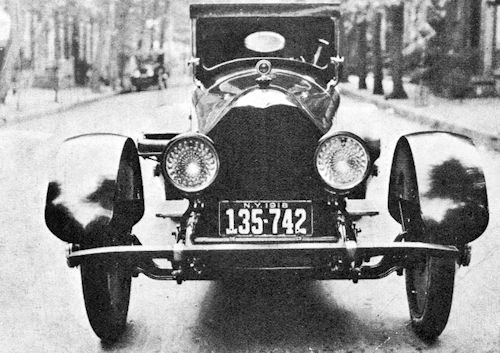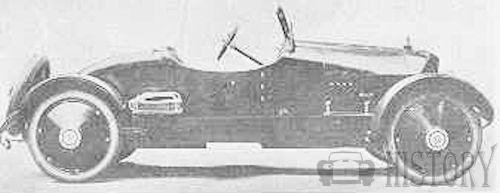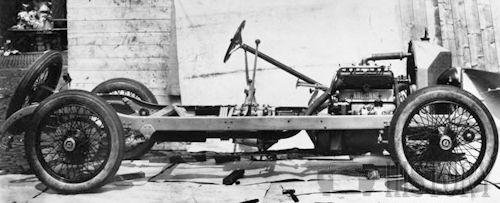Argonne
American Automotive manufacture New Jersey. USA From 1918 to 1920

The Argonne was an American automobile manufactured from 1918 to 1920 by the Jersey City Machine Co. of Jersey City, New Jersey.
History
Only 24 were produced before the company folded. in 1918 a prototype car was a sports roadster with an aluminum body crafted by the Schutte Body Co. of Lancaster, Pennsylvania. It was powered by an inline-four 3.7 L Buda engine.The Argonne, named after the French forest in which U.S. troops fought their greatest battle in Word War I.
The Argonne was a unusual car existed for less than two years, during which only 24 cars were constructed marketed as a distinct forward step in automobile construction.The Argonne was to have been manufactured by the Automotive & Machinery Engineering Company, of Long Island City,N.Y..Three months later it was announced that the car would be built by the Jersey City Machine Company, 113-115 Plymouth Street,Jersey City, N.J.description was in a press release in June, 1919.
The chassis is sturdy but light and well balanced. And the graceful flowing body-lines "suggest" its high speed. The "Argonne Four" has many improvements over present-day motor-car construction, which make for great Power with Economy, Strength with Simplicity, Speed without Vibration, and Long Life without Excessive Weight with 20 miles per Gallon and top speed of 70 mph. wheelbase given variously as 118 and 119 inches for the two passenger model, 128 inches for the four-passenger model Weight of Chassis: 1850 pounds. Radiator mounted on ball bearings.Standard Equipment: Hartford shock absorbers; Waltham combination clock and 80 MPH speedometer; Complete set of tools, tire pump, inspection light with cord, two lights in engine compartment, dashboard gasoline meter. Headlights have two bulbs. Muffler cut-out standard.Colors: Gun metal body, satin finish. Fenders and wire wheels, black; disc wheels gray with black rims and hubs. Other colors optional. Upholstery of Spanish leather,any standard color.
The last Argonnewas assembled in March, 1920, and the last two chasses had a larger more luxury Duesenberg engine. This Originally used the Buda Engine.
This had four cylinders and displacement of 226 cubic inches. The valve arrangement was L-head. The chrome-nickle crankshaft had three main bearings, and was counter balanced the crankcase was of aluminum.At first an Argonne carburetor was used, but this was soon changed to Rayfield, and was variously stated as being by Zenith or Stromberg. The drive system a normal Borg & Beck single plate clutch with a four-speed transmission built by the Reading Gear Works. Third gear was direct with an over-all ratio of 4.41:1, while fourth gear was an over-drive with a ratio of 3.41:1. Special Argonne-designed universal joints in drive shaft.
Brakes: Foot brake operated a single expanding drum at the rear of the transmission housing. Emergency brakes operated the drums on the rear wheels. Brake and clutch
pedals adjustable.Steering: Worm and segment by Gemmer.Tread was 56 inches.Tires: 32 x 4 Silverstone; wheels, disc or wire. For the Electrical system a Westinghouse 12-volt system with Exide battery and Eisemann magneto.
For sevice .
Oil may be drained from crankcase by means of a valve on the sideof the engine. Both brake systems adjustable by knurled nuts under floor board.firing order, 1,3,4,2.
Prices:
Chassis, $4000
2-door Special Roadster, $4500
Four-Passenger Sport Model, $4700

1919 Argonne Roadster
A Rochester-Duesenberg power plant was also available. Production models included a roadster on a 118-inch (3,000 mm) wheelbase,and a 4 speed transmission with a speed of 70 mph. Some sources list an open Tourer model on a 132-inch (3,400 mm) wheelbase.

1919 Argonne Roadster chassis
The marque featured a sharply pointed radiator similar to that found on the Austro-Daimler.


